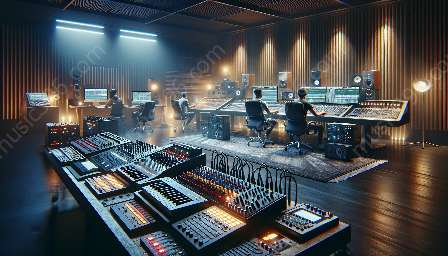Sound reinforcement systems play a crucial role in delivering high-quality audio experiences in various settings, from concerts to public addresses. The design of these systems is greatly influenced by psychoacoustic principles, which involve understanding how humans perceive and interpret sound. This article explores the intersection of psychoacoustics and music technology, shedding light on how these principles shape the design of sound reinforcement systems.
Understanding Psychoacoustics
Psychoacoustics is the branch of psychology and acoustics that deals with how sound is perceived and interpreted by the human brain. It encompasses various factors such as loudness, pitch, timbre, and spatial perception. By delving into the complexities of human auditory perception, psychoacoustics provides invaluable insights into how sound reinforcement systems should be designed to align with human auditory capabilities.
Implications for Sound Reinforcement Systems Design
Psychoacoustic principles have several implications for the design of sound reinforcement systems:
- Frequency Response: Understanding how humans perceive different frequencies allows for the optimization of frequency response in sound reinforcement systems. By emphasizing frequencies that are more readily perceived by humans and reducing emphasis on frequencies that are less important for human auditory perception, designers can enhance the overall listening experience.
- Dynamic Range: Psychoacoustics also sheds light on human sensitivity to changes in loudness, known as the just-noticeable difference (JND). Designing sound reinforcement systems with an understanding of JND helps in maintaining an appropriate dynamic range, ensuring that the system can accurately reproduce both delicate nuances and powerful sounds without causing listener fatigue.
- Localization: Humans possess the ability to localize sound sources in space, a phenomenon known as spatial hearing. Utilizing psychoacoustic principles, sound reinforcement systems can be designed to create a realistic and immersive spatial experience for listeners, enhancing the sense of presence and envelopment.
Utilizing Advanced Signal Processing
Music technology plays a pivotal role in integrating psychoacoustic principles into the design of sound reinforcement systems. Advanced signal processing techniques, such as spatial audio processing, equalization, and compression, are harnessed to optimize the system's performance based on psychoacoustic insights.
Conclusion
By leveraging psychoacoustic principles and integrating them with the advancements in music technology, the design of sound reinforcement systems can be tailored to deliver immersive, lifelike auditory experiences. Understanding how humans perceive sound is fundamental in creating systems that complement and enhance the way we experience music, speech, and other forms of audio content.

























